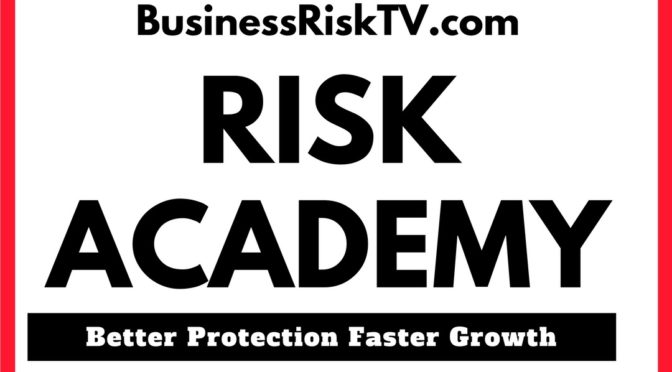Predicting the Unpredictable: The Future of Risk Management
In the dynamic world of business, navigating uncertainty is paramount. Yet, a fundamental challenge plagues every decision: the near-impossible task of predicting the future. While risk management thrives on anticipating potential threats, external factors constantly evolve, and seemingly stable markets can shift with unforeseen disruptions. This article delves into the inherent difficulties of predicting the future, particularly for Western economies, and explores a solution for navigating the ever-changing risk landscape.
The Enigma of the Unforeseen: Why Predicting the Future is Flawed
Our intuition may lead us to believe that predicting the future is a key step in risk management. However, relying solely on forecasts can be a perilous strategy. Here’s why:
- The Butterfly Effect: Even the most meticulous models rely on assumptions. A seemingly insignificant event, like a butterfly flapping its wings, can trigger a chain reaction, leading to vastly different outcomes. Predicting the precise ripples of such events is inherently impossible.
- Black Swan Events: Unforeseen events with significant impact, often referred to as Black Swans, expose the limitations of prediction. The 2008 financial crisis is a prime example. While some experts warned of systemic vulnerabilities, the precise timing and severity of the crash remained unforeseen.
- Human Behaviour: Human behaviour is inherently unpredictable. Market sentiments can shift on a whim, influenced by news cycles, social media trends, or unexpected political events.
The Future of Western Economies: Navigating Uncharted Waters
The complexities of predicting the future are further amplified when considering the shifting landscapes of Western economies. Here’s what makes forecasting a challenge:
- Technological Disruption: The rapid pace of technological advancement disrupts traditional industries and creates new risks. The rise of automation and artificial intelligence, for example, necessitates adapting risk management strategies to address potential workforce displacement and cyber threats.
- Geopolitical Uncertainty: Events on the global stage can have ripple effects on Western economies. Trade wars, political instability in key regions, and climate change all present unpredictable risks with significant economic repercussions.
- Changing Consumer Preferences: Consumer behaviour is constantly evolving. Shifting demographics and values necessitate a dynamic approach to risk management.
These factors combined create a volatile environment where risks are constantly evolving. Businesses cannot simply rely on static predictions; they need a more agile approach to risk management.
Introducing BusinessRiskTV.com Business Risk Management Club: A Proactive Approach to Uncertainty
Instead of chasing elusive predictions, businesses need a proactive approach to risk management. BusinessRiskTV.com’s Business Risk Management Club offers a solution:
- Community of Experts: The club provides access to a network of leading risk management professionals, allowing businesses to share best practices and learn from the experiences of others navigating the same uncertainties.
- Cutting-Edge Insights: The club offers regular webinars, articles, and discussions on emerging risks and best practices for mitigating them. This ensures businesses stay informed about the latest threats and adapt their strategies accordingly.
- Scenario Planning: The club promotes the use of scenario planning, a critical risk management tool. Instead of focusing on a single future, businesses can create strategies for different potential outcomes, making them more adaptable to the unexpected.
- Continuous Learning: The ever-changing nature of risk necessitates continuous learning. The club provides a platform for ongoing education, equipping businesses with the knowledge and skills to navigate the unpredictable business landscape.
By joining the Business Risk Management Club, businesses can move away from futile attempts to predict the future and towards a proactive approach to risk management.
The Future of Risk Management is Not About Predicting, It’s About Adapting
In conclusion, predicting the future is an exercise in futility. However, by acknowledging the inherent limitations of forecasts, businesses can shift their focus to proactive risk management. By leveraging the resources and expertise offered by the Business Risk Management Club, businesses can build resilience and adapt to the ever-changing risk landscape.
The future may be unpredictable, but by being well-prepared for a wide range of possibilities, businesses can navigate uncertainty and thrive even in the most challenging economic environment.
Next Steps:
- Learn more about the Business Risk Management Club.
- Sign up for free to gain access to valuable resources and insights.
- Join the community of risk management professionals and collaborate towards a more secure future for your business.
Embracing Uncertainty: A Culture of Resilience
The true measure of a successful business isn’t the accuracy of its predictions, but its ability to navigate unforeseen challenges. A culture of resilience, adaptability, and continuous learning is the cornerstone of sustainable success.
The BusinessRiskTV.com Business Risk Management Club fosters a community that embraces uncertainty as an opportunity for growth. By sharing experiences, insights, and best practices, members can collectively build a stronger understanding of the evolving risk landscape.
Join the BusinessRiskTV.com Business Risk Management Club
Are you ready to transform your approach to risk management? Join the BusinessRiskTV.com Business Risk Management Club and gain access to a wealth of resources, insights, and a supportive community. Together, we can navigate the complexities of the business world and build a more resilient future.
Remember, the future is uncertain, but with the right tools and mindset, your business can thrive.
Disclaimer: The information provided in this article is intended for general knowledge and informational purposes only, and does not constitute financial or business advice. It is essential to consult with qualified professionals for personalized guidance on risk management and business strategy.
Get help to protect and grow your business faster with less uncertainty
Subscribe for free business risk alerts and risk reviews
Read more business risk management articles for free


